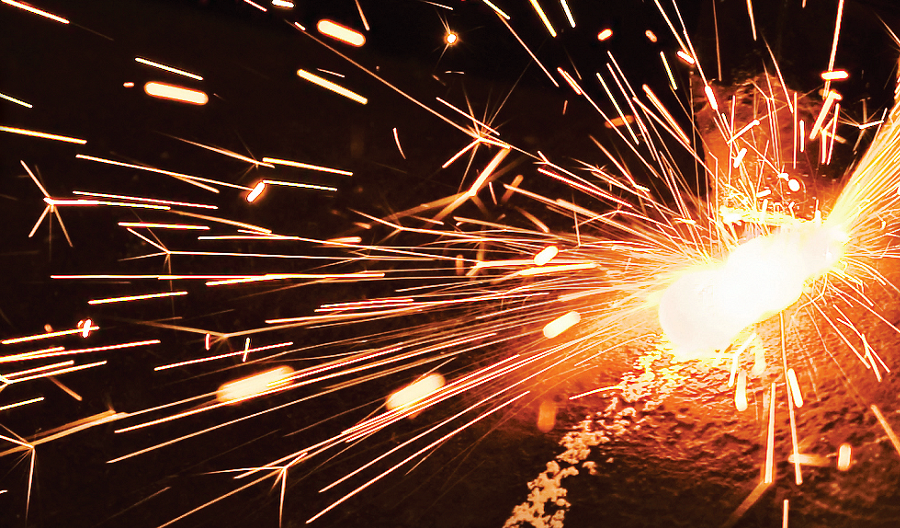Manufacturing Tomorrow: How Do Leading Companies Instill a Culture of Innovation?

Key Takeaways:
- Companies who want to inspire innovation should make it part of their internal processes and protocols.
- Stanley Black & Decker fosters innovation through an “intrepreneurship” mindset, or using practices of entrepreneurship in an existing company
As the producer of the “Manufacturing Tomorrow” podcast, I have gained visibility into how manufacturing company leaders have shared sage, and sometimes surprising, advice on developing and retaining innovation in companies.
To kick off Manufacturing Month, I am offering a two-part series of excerpts from an interview with Bob Welsh, vice president of Breakthrough Innovation for Stanley Black & Decker’s (SBD) Innovation Accelerator team.
A household name, SBD is a Fortune 500 American manufacturer of industrial tools, household hardware and security products. To maintain a stronghold on their market, Welsh focuses on how to improve and advance SBD’s global innovation processes and impact. To spur internal creativity, his team is responsible for the creation, oversight and management of the company’s first employee makerspace.
KK: Stanley Black & Decker clusters employees in innovation hubs that are connected to startups, academic experts and other sources of inspiration —how does that approach to company culture speed innovation toward product development and commercialization?
BW: The way the company is set up is that the core businesses are in design centers or single locations. And then some of the more breakthrough innovation-type teams are the ones that are clustered elsewhere. One of the best things you can do with your creative teams or innovative teams is partner or link them with other companies or sources of influence or inspiration. Being outside of core allows them to focus, but being tied to other influences often allows for serendipity to happen.
KK: What is your take on the evolving role of innovation practices in corporate growth strategy?
BW: You can't just participate in innovation or put a few people in an offsite location and say, “Hey, guess what? We do innovation here.” You really have to have a process and a protocol.[1] You have to get the right people selected that have the right mindset and ilk to be on that team and then collaborate and be able to work with some of the other teams. So it's got to be front and center, and it is something that we look at working with other innovative mindsets like academic institutions, other startups, other business units and other ecosystems to create a creative collision of ideas, thoughts and inspiration.
KK: Some of the things that you are engaged in I consider to be under the term "intrepreneurship." Can you talk a little bit more about the need for that in such a large corporation like SBD?
BW: As best I understand it, intrepreneurship is using an entrepreneurial mindset and activities within an existing organization versus a startup or a solo practice.[2] Having been with SBD for more than 20 years now, the company, like all companies of that size, need an inherent entrepreneurship mindset. It doesn't have to come from every corner of the business but can be ingrained in the culture of the business and the folks who are leading the charge there. And really what that means is, as an entrepreneur, you find something you're desperately passionate about that you would choose to probably do as a hobby or in your free time — or even if you weren't being paid for it. And you devote yourself to that because failure's not an option. That mindset doesn't mean that if you're with a corporation you shouldn't think like that. More and more now, corporations are providing a little more dispensation where employees can work on a pet project, where they can help bring something to life. So the intrepreneurship aspect is more critical now in corporations than ever.
KK: And that perspective seems to be evident in the SBD Towson Makerspace.
BW: One of the things I have the privilege of overseeing is the company's first employee-only makerspace. I heard an adage one time that I love, that with every set of hands you have, you get a free brain. As a company, SBD has more than 50,000 employees globally. They've all got ideas. You may be a factory worker who doesn't even have a computer, but you're the expert because you see how things are assembled, how they fail, maybe potentially have a better way of making them. You need to have an outlet to be able to contribute those kinds of ideas to the company. In addition to an online portal, we have a makerspace that allows employees to actually learn how to use tools. Believe it or not, even though we make tools, a lot of our employees don't use them. The makerspace allows them to come in and actually learn how to use the tools, our tools or other more sophisticated, larger pieces of equipment. It also gives them a space where they can come work on their idea either by themselves or with teammates or other folks in the company. And it has been really fantastic as far as our cultural addition to that intrepreneurial spirit that we are starting in the company.
A special thanks to the Center for Innovation Strategies at The Ohio State University Fisher College of Business for arranging this interview.


